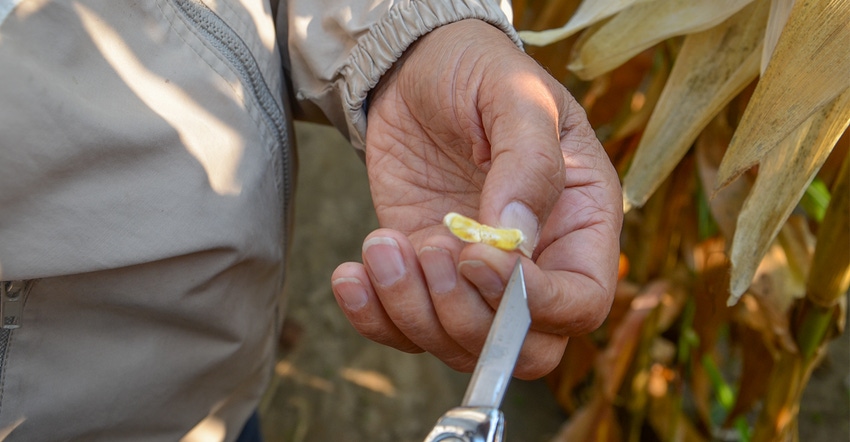
Some great philosopher in a less politically correct time once said, “It ain’t over til the fat lady sings.” The proverbial “fat lady” appeared to be warming up for some cornfields during a very dry August, but late rains and a cool stretch may have drowned out her first notes. Some cornfields may have finished grain fill better than it first appeared they would.
Dave Nanda, an independent crops consultant based in Indianapolis, visited a cornfield in early September and expected to find totally brown leaves and stalks, with the black layer formed on most kernels. Before arriving, he figured the field would soon be a candidate for harvest. It was planted on April 20.
He didn’t find what he expected. Instead, there was still plenty of green leaves and tissue, even though plants were affected by a combination of diseases, nutrient deficiency symptoms and the natural tendency to change color as the crop matures.
When Nanda checked ears and began looking for black layers in kernels, he was surprised again. The black layer that forms at the tip of each kernel signifies physiological maturity. Once it forms, no more nutrients can enter the kernel. The black layer typically forms at 30% to 35% moisture, depending upon the hybrid, after the milk line disappears. There was still a visible milk line in some kernels, although it was disappearing rather quickly.
Strange season
What happened to change the situation from what Nanda expected? He had visited the field just two weeks earlier, and had based what he expected to find in early September on that visit. During that two weeks, temperatures were unseasonably cool, both for daytime highs and nighttime lows, and two significant rain events ended the lack-of-moisture situation. Each rain was somewhere over half an inch.
“The plants responded by using the cool weather and moisture to continue on with the growing season instead of shutting down,” Nanda speculates. “In late August, it appeared that the grain fill period would not end well, with kernels perhaps being lighter than they should have been. After the shift in weather and the rebound in plant response, it appeared more likely that kernels would fill out normally.”
Nanda says this latest turn of events caps off what has been a strange growing season for corn in much of Indiana. While this field was planted early, the farmer replanted part of the field. Heavy rains in late April and early May made it a record year for replanting in the state. A sizable amount of corn wasn’t planted until the last couple of weeks of May. While the cool weather in late August and early September may have favored grain fill, it may also have slowed maturity.
How it all plays out in terms of kernel weight, drydown and yield remains to be seen, Nanda concludes.
About the Author(s)
You May Also Like




